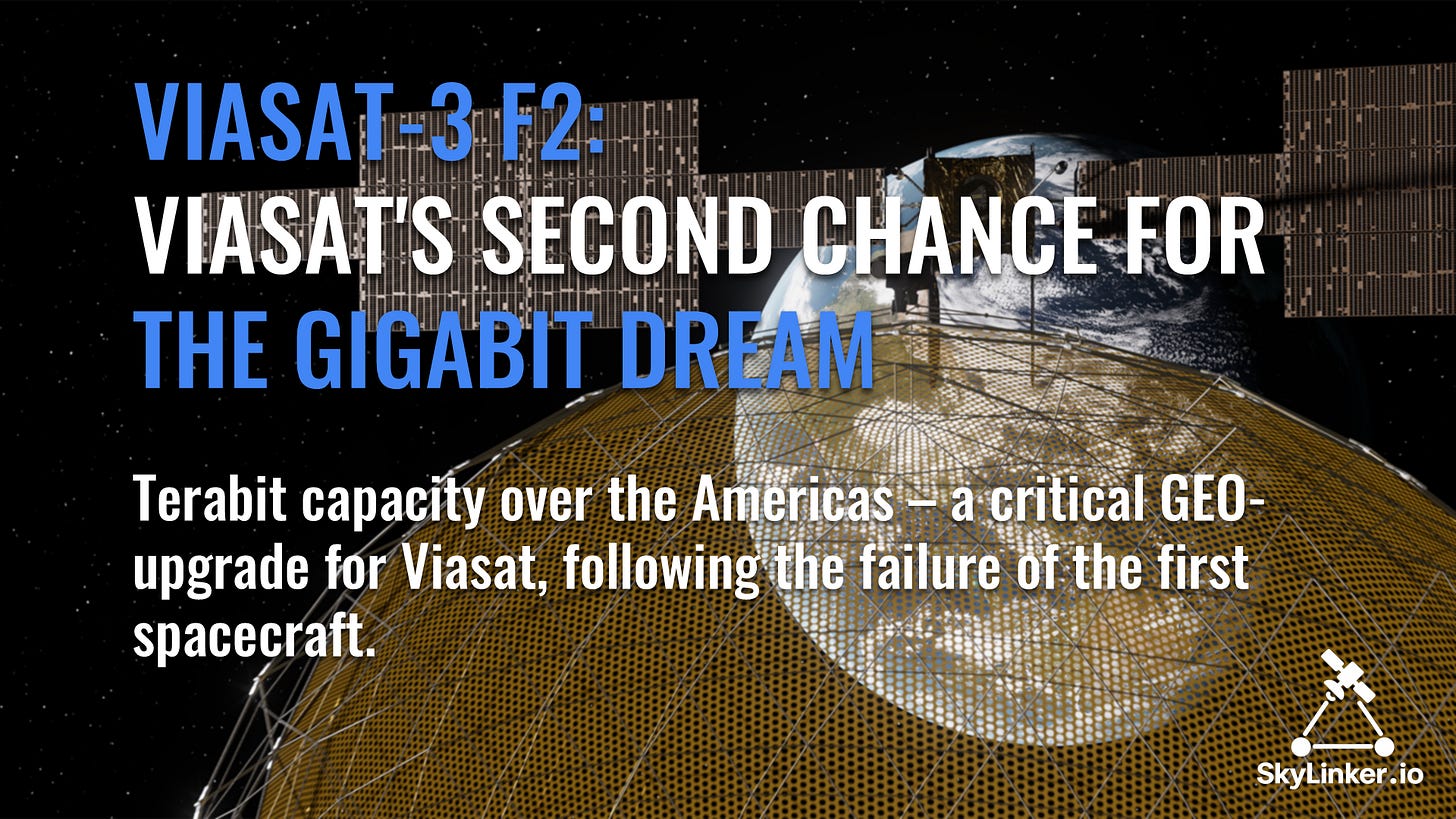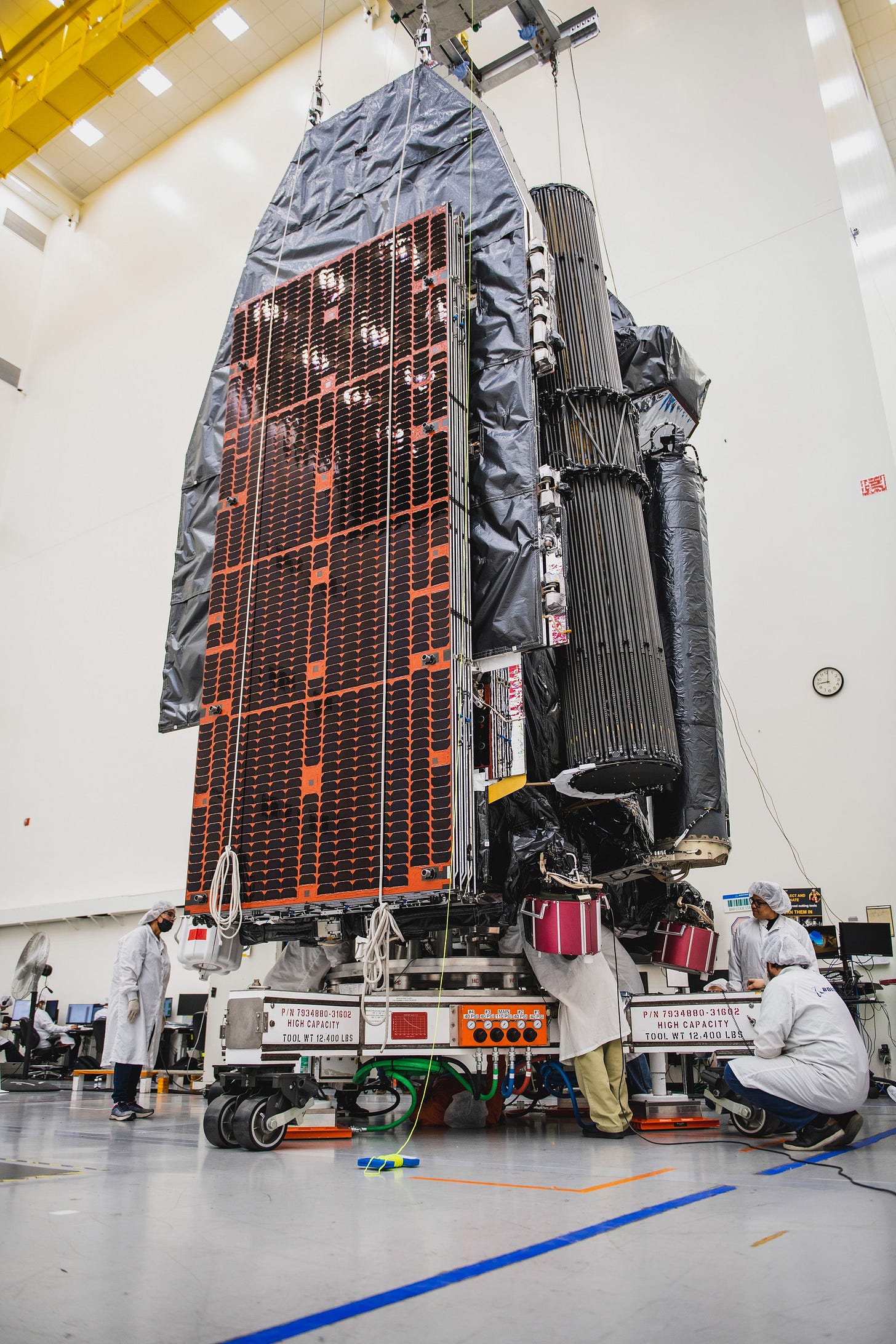ViaSat-3 F2: Viasat's Second Chance for the Gigabit Dream
Terabit capacity over the Americas – a critical GEO-upgrade for Viasat, following the failure of the first spacecraft
The second satellite in the ViaSat-3 series, designated F2, has arrived in Florida for final launch preparations. It is scheduled to launch on an Atlas V 551 rocket from Space Launch Complex SLC-41 at Cape Canaveral at the end of October 2025.
The spacecraft, weighing more than 6 tons, was transported from the Boeing plant in El Segundo, California, by the Ukrainian An-124 “Ruslan” transport aircraft, which once again confirmed its role as a key logistics tool for the global space industry. Upon arrival in Florida, the satellite was placed at the Astrotech Space Operations facility for pre-launch processing – checks, fueling, and integration with the launch vehicle.
In the Shadow of the Problematic ViaSat-3 F1
The first satellite in the series, F1, launched in 2023, encountered a critical technical problem: one of the key antenna reflectors did not deploy properly. As a result, the spacecraft operates with only a fraction of its design capacity, providing limited services. This was a serious blow to the company’s business plans, as ViaSat-3 was planned as a global triad of ultra-high-capacity satellites for the decade ahead. That is why the current F2 launch is called a “second chance“ – the restoration of customer and investor confidence and Viasat’s competitiveness depends on it.
Technical Specifications of ViaSat-3 F2
Launch Mass: over 6,000 kg
Platform: Boeing 702MP+ with all-electric main propulsion engines
Power Supply: over 25 kW
Throughput: over 1 Terabit/s (one satellite provides more than Viasat’s entire current fleet combined)
Frequency Band: Ka-band, with dynamic beam forming and re-tuning based on demand
Coverage Area: North and South America
Expected Start of Operations: early 2026
Platform Manufacturer: Boeing Space Systems
Payload: Viasat
Services and Markets
The ViaSat-3 F2 satellite is designed to provide multi-service offerings in the Ka-band. Estimated speeds for end-users will be 100+ Mbps, which puts the GEO segment in direct competition with new Low Earth Orbit (LEO) systems. At least where high signal latencies are not an obstacle.
Corrections After F1 and the F3 Prospect
Viasat stated that additional antenna system tests were conducted for F2, and design changes were made to avoid a repeat of the incident. It is also clarified that a different reflector manufacturer was chosen for the third spacecraft in the series, F3, which is currently undergoing integration, significantly reducing risks. The launch of F3 is expected in 2026.
After the completion of the entire ViaSat-3 triad deployment, the company plans to cover three global regions – the Americas, EMEA, and the Asia-Pacific region – providing almost complete global coverage.
Market Dimension: GEO vs. LEO
Against the backdrop of the explosive growth of Low Earth Orbit (LEO) constellations – where Starlink has already exceeded 6,000 spacecraft, and Amazon Kuiper is beginning mass deployments – Viasat continues to bet on giant geostationary (GEO) satellites with terabit power. The success of the F2 launch will be a key test for this concept: are ultra-heavy GEO spacecraft capable of remaining competitive alongside thousands of small LEO satellites?
The Ukrainian Contribution to the Global Space Industry
An important part of this story is the Ukrainian aircraft An-124 “Ruslan,” which delivered the satellite to the launch site. The An-124 – the world’s largest serial transport aircraft – has been used for decades to transport satellites, rocket components, and ground infrastructure. Its unique payload capacity and range make it indispensable in global space logistics.
Thus, even in missions of this scale, the Ukrainian aviation contribution remains an invisible, yet critically important element of the chain: from the clean rooms of the factory to the launch complex on the Atlantic coast.



